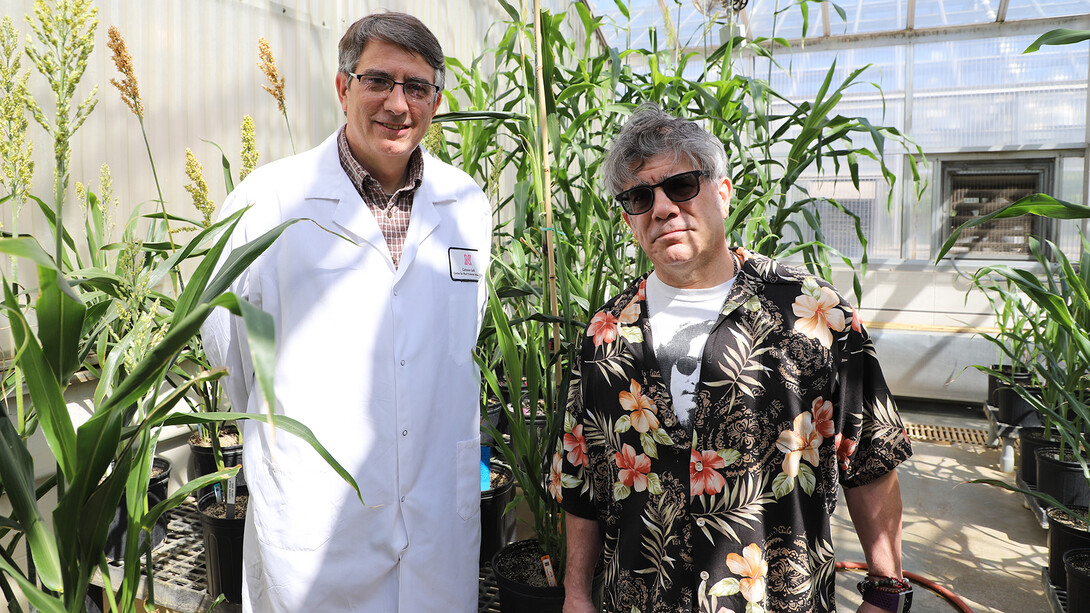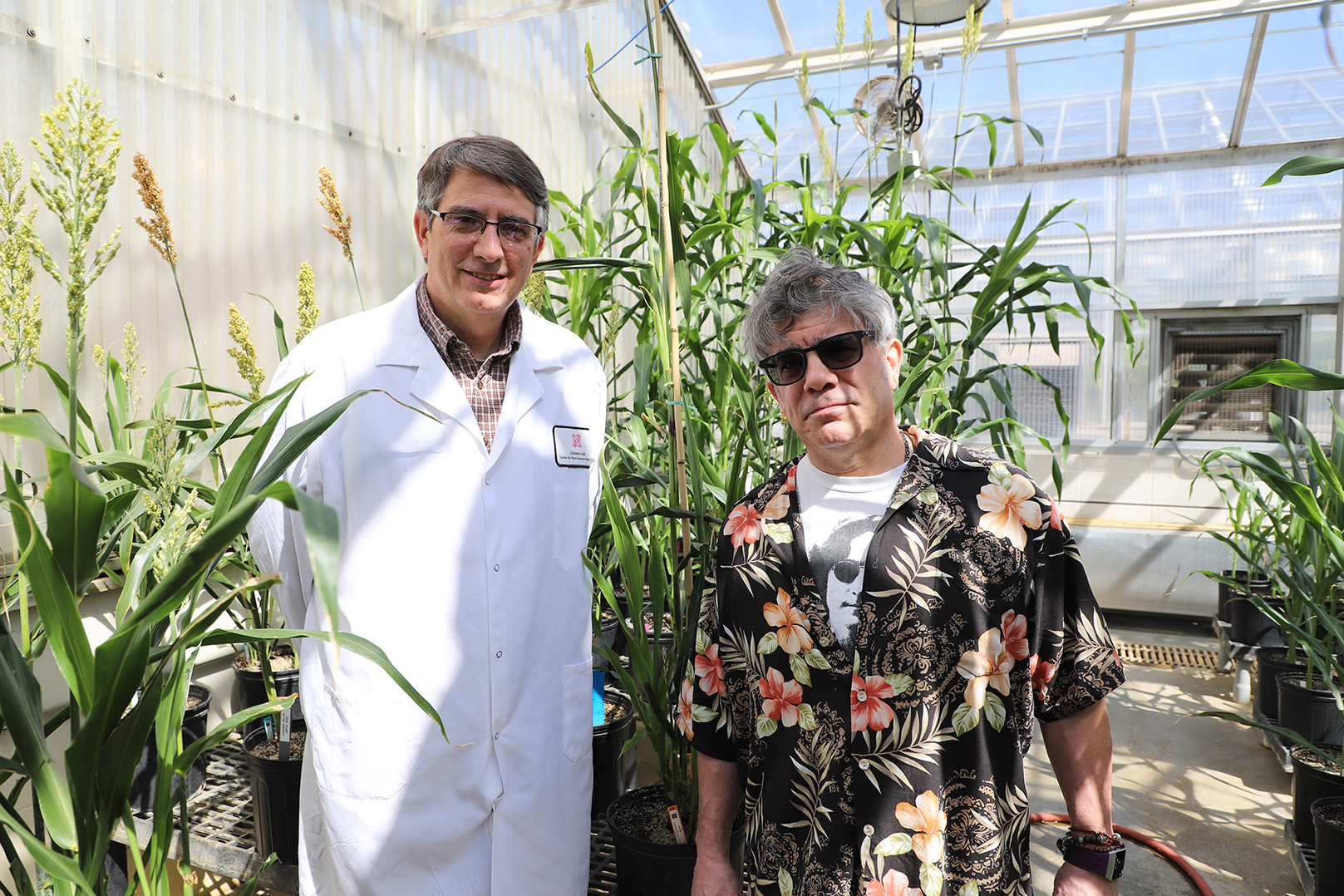
University of Nebraska–Lincoln research that aims to transform sorghum into a sustainable feedstock for the bioeconomy is receiving renewed support from the U.S. Department of Energy.
Tom Clemente, Eugene W. Price Professor of Agronomy and Horticulture, and Edgar Cahoon, George Holmes Professor of biochemistry who serves as director of Nebraska’s Center for Plant Science Innovation, have spent more than a decade using biotechnology tools to develop sorghum germplasm that accumulates vegetable oils in the plant’s stems and leaves.
Sorghum sugars already are used to produced ethanol, but the work by Clemente and Cahoon would make the plant an important future feedstock for bioproducts such as renewable diesel and jetfuel. The two scientists have been members of the Center for Advanced Bioenergy and Bioproducts Innovation (CABBI), based at the University of Illinois Urbana-Champaign, since it was first established in 2017.
The U.S. Department of Energy recently announced an additional $120 million in funding over the next five years for CABBI. The collaboration is one of four large-scale DOE-funded research centers across the country focused on innovation in biofuels, bioproducts and a clean energy future for the United States.
About $4 million of that amount will support research by Clemente and Cahoon. Nebraska is among 20 institutions that are partners in Illinois’ Bioenergy Research Center. The Nebraska research team is part of the feedstock production priority area, which uses a “plants as factories” paradigm in which biofuels, bioproducts and foundation molecules for conversion are grown directly in crops that are resilient and productive.
“This provides funding that allows us to do innovative research to address a societal grand challenge: developing an economically sustainable feedstock for liquid biofuels and developing the knowledge associated with this,” Cahoon said.
The sorghum-derived vegetable oils would complement current oilseed feedstocks such as soybean and provide a diverse range of sustainable feedstocks to produce renewable energy and biomaterials.
The two Husker researchers work in laboratories and greenhouses at the Beadle Center, as well as a biotechnology-dedicated field site at the Eastern Nebraska Research, Extension and Education Center near Mead. Their work is highly collaborative, and they conduct research with investigators at other CABBI locations across the U.S.
It likely will take more than five years to bring the visionary work to reality, Clemente said.
“The technology may get there, but the bigger hurdles are the regulations that govern the release of such a feedstock and the lack of infrastructure needed to transport and process the biomass for lipid extraction,” he said.








